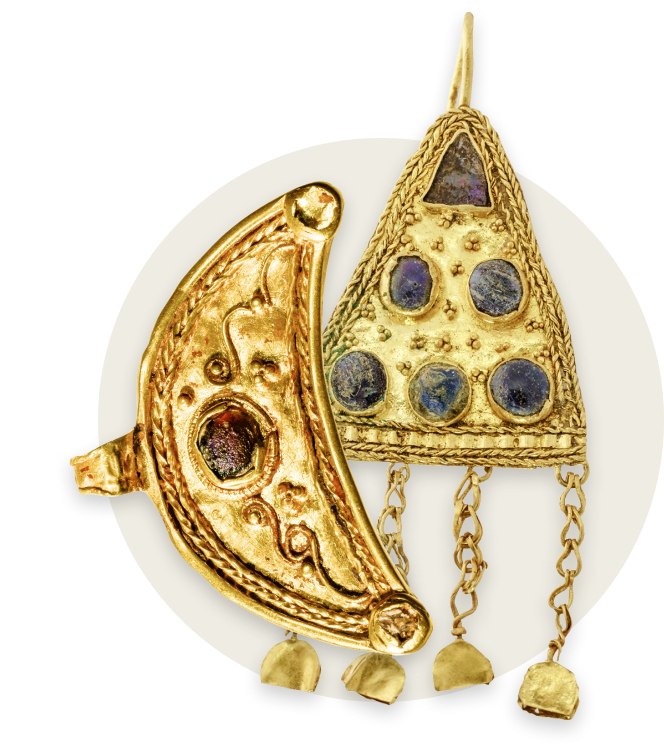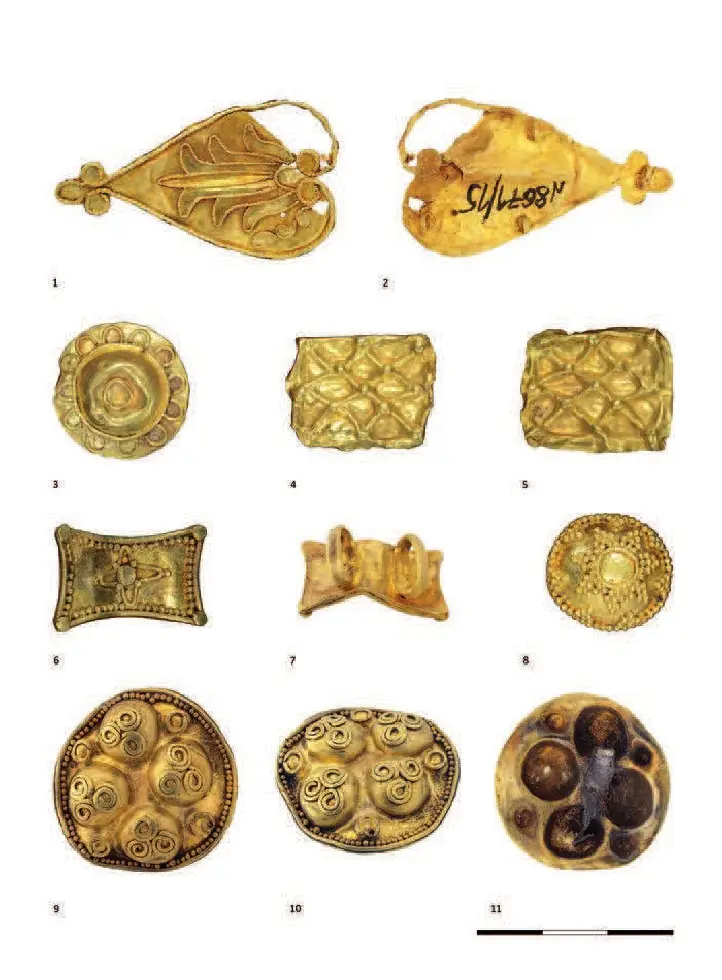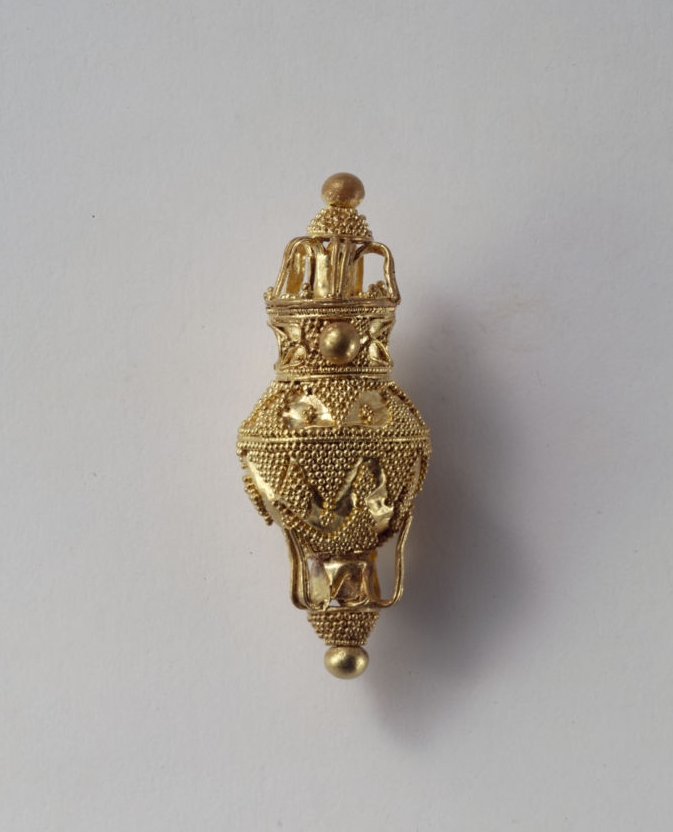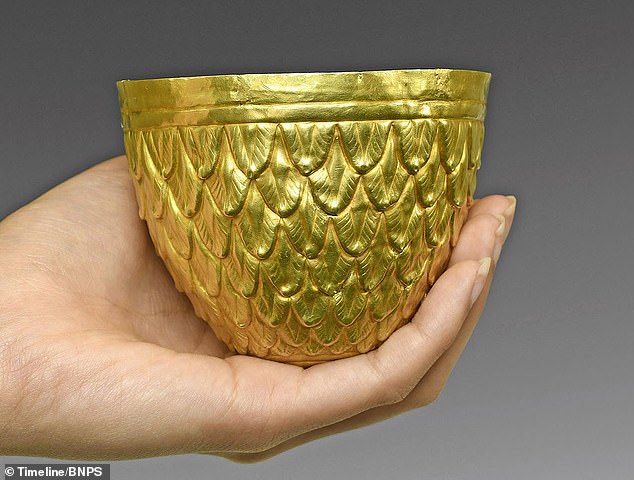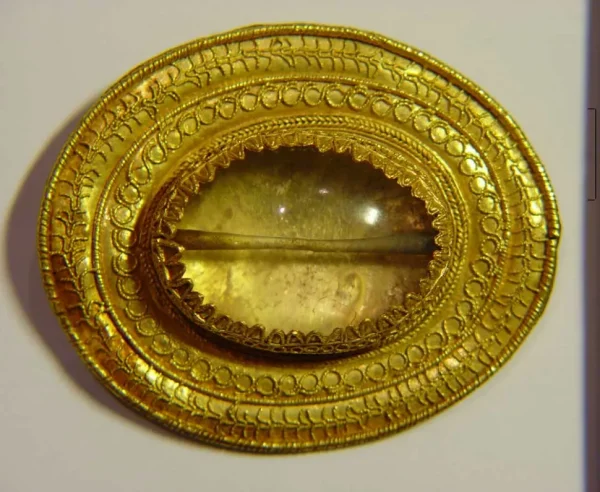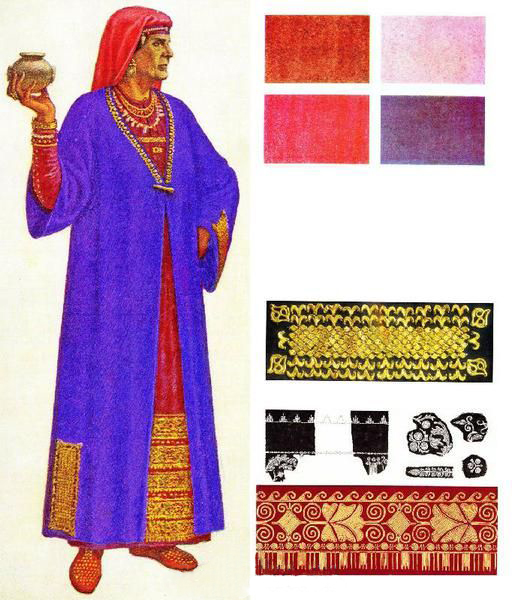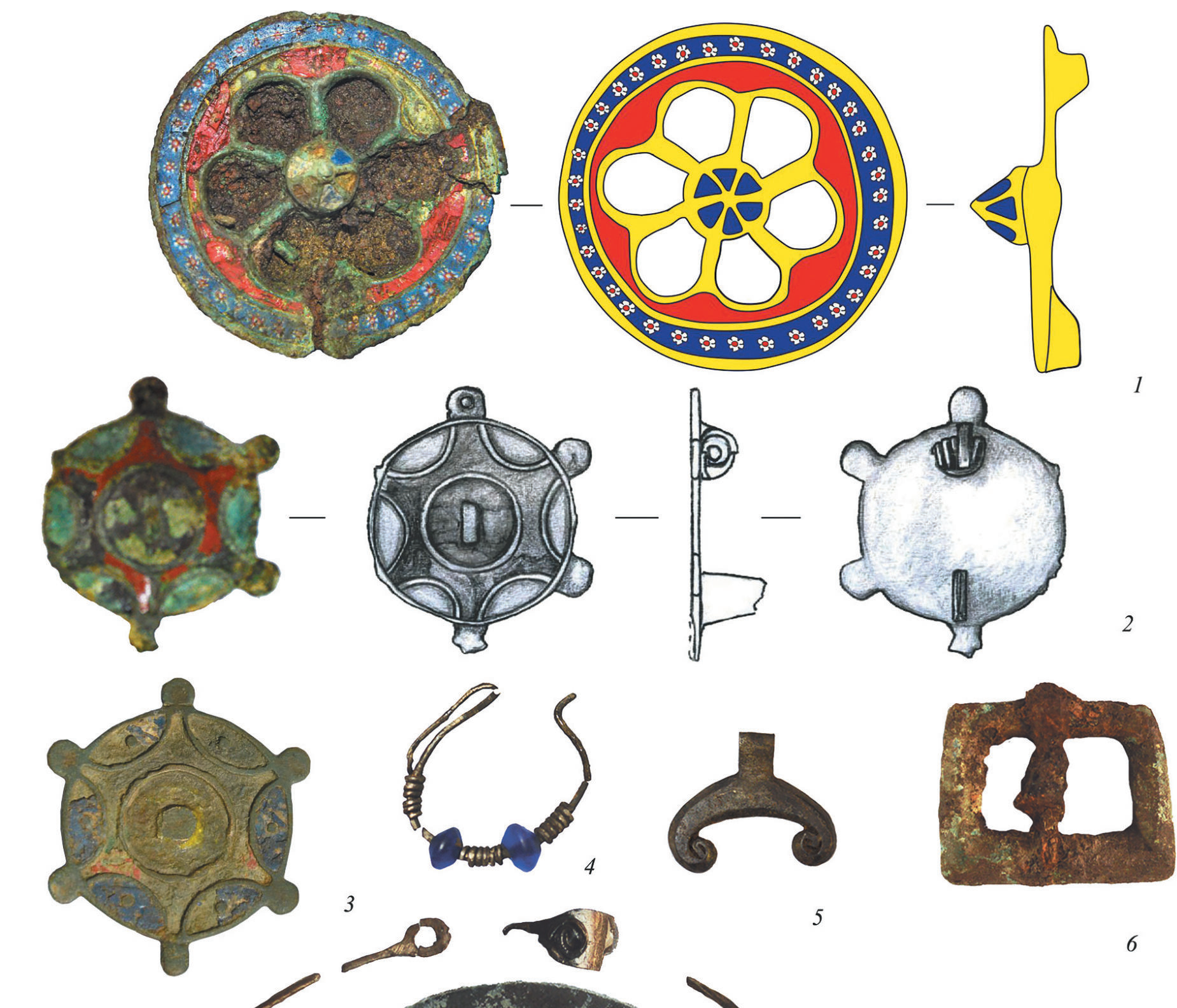Na bazie artykułu: M.Treister, Ptolemaic Finger Rings in North Pontic Area: New Finds and Hypotheses https://www.academia.edu
Arsinoe II – 316 – 270/268 BCE. Daughter of Pharaoh Ptolemy I Soter, founder of the Hellenistic state of Egypt, and his second wife Berenice I of Egypt. Ruler of Heraclea Pontica in 284–281 BCE, Queen of Egypt since 277 BCE.
Berenike II – 267/266 – 221 BCE. Queen regnant of Cyrenaica from 258 to 246 BCE and co-regent queen of Ptolemaic Egypt from 246 to 222 BCE. Daughter of Apama / Apame II (ca. 292 – 249 BCE), a Syrian Greek princess of the Seleucid Empire, queen of Cyrenaica by marriage to King Magas of Cyrene. [wiki]
Arsinoe III – 246/245 – 204 BCE. Queen of Ptolemaic Egypt in 220 – 204 BC. Daughter of Ptolemy III and Berenice II

10 – Chersonesos, inv. no. Х.1900.40
11 – Gorgippia, inv. no. Гп.1881.8
After M. Treister

Finger ring, bust of a draped woman probably Berenike of Kyrene; bronze, 2.9 x 1.9 cm;
273 – 221 BCE
“…Melonenfrisur, a hairstyle in which strands of hair are twisted into longitudinal rolls, resembling melon rolls, forming a knot at the back of the head. However, there are variations of this hairstyle, which are manifested primarily in the way the braided hair is styled into a knot.”
Most interesting are portraits with two pendants hanging from a knot at the back of the head.

10 – Toronto, Royal Ontario Museum, inv. no. 991.169.1
11 – Oxford, Ashmolean Museum, inv. no. 1941.318
After M. Treister

© Musée du Louvre Bj 1461 https://collections.louvre.fr/ark:/53355/cl010256010


Berlin, Münzkabinett der Staatlichen Museen, 18217869. Photo by Reinhard Saczewski
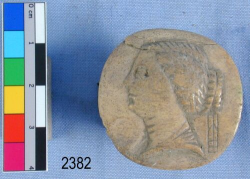
- Cleopatra Papaevangelou – Genakos, The Depictions of Jewellery on Coins https://www.academia.edu
- Mairi Gkikaki, Numismatic Approaches to Jewelry of the Fourth Century BC https://www.academia.edu
- Mairi Gkikaki, The women hair styles on coins and in sculpture in classical and Hellenistic times. Types and Iconology https://www.academia.edu


